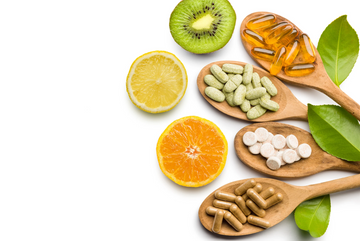The Incredible Composition of Breast Milk: Nature’s Perfect Nutrition
Breast milk is more than just food—it’s a dynamic, living substance uniquely designed to nourish and protect your baby. Packed with essential nutrients, immune-boosting components, and growth-supporting factors, it adapts to your baby’s needs, ensuring optimal development. Let’s explore the remarkable elements that make breast milk the gold standard for infant nutrition.
Macronutrients: The Building Blocks of Growth
Breast milk provides a balanced mix of proteins, fats, and carbohydrates, each playing a vital role in your baby’s development:
Proteins – Comprised of casein and whey, these proteins are highly digestible and support muscle and bone growth. Whey proteins also help reduce gastrointestinal infections.
Fats – Making up about 55% of breast milk’s calories, fats provide essential energy and aid in brain and eye development. The types of fats, including omega-3s, are influenced by maternal diet.
Carbohydrates – Primarily lactose, which fuels energy production and supports gut health by promoting beneficial bacteria.
Immune-Boosting Components
Breast milk is rich in antibodies, white blood cells, and enzymes that help protect against infections and strengthen your baby’s immune system:
Immunoglobulins – These antibodies neutralize harmful bacteria and viruses, reducing the risk of illness.
White Blood Cells – Actively fight infections and support immune system development.
Oligosaccharides – Complex sugars that serve as prebiotics, feeding good bacteria in the gut and preventing infections.
Growth and Development Factors
Beyond basic nutrition, breast milk contains hormones, enzymes, and stem cells that contribute to healthy growth:
Growth Factors – Support the development of organs, blood vessels, and the nervous system.
Hormones – Regulate appetite, sleep patterns, and even enhance bonding between mother and baby.
Stem Cells – May aid in organ development and healing.
Vitamins and Minerals
Breast milk naturally provides essential vitamins and minerals that support overall health:
Calcium and Phosphorus – Strengthen bones and teeth.
Iron – Supports brain development and prevents anemia.
Vitamins A, D, E, and K – Aid vision, immune function, and cell growth.
A Dynamic and Adaptive Superfood
One of the most fascinating aspects of breast milk is its ability to change composition based on your baby’s needs. For example:
Foremilk vs. Hindmilk – Foremilk is more hydrating, while hindmilk is richer in calories.
Daily Fluctuations – Nutrient levels shift throughout the day to support energy and sleep cycles.
Response to Illness – Breast milk adjusts to provide extra immune protection when your baby is sick.
Sources:
Breastmilk composition – the research. Breastmilk composition – the research | Australian Breastfeeding Association. (n.d.). https://www.breastfeeding.asn.
Medela. (2025, May 19). Breast milk composition: Key Nutrients & Changes. https://www.medela.com/en/














